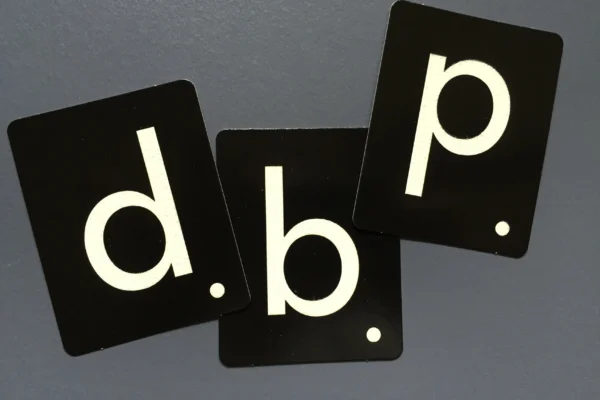
Practice makes perfect. Better said, practice makes progress.
Learning a new skill requires repetition to automate it. Similarly, every beginner reader needs to practice reading to improve fluency. Add dyslexia to the equation, this becomes even more critical.
Definition of reading fluency is the ability to read text accurately, quickly and with expression and understanding. First, a reader learns to read a word accurately and then, with practice, fluently. With fluency skill, comes better comprehension.
Understanding fluency and how the brain works is critical to build a successful reading fluency strategy. The brain has two hemispheres: right and left. The left hemisphere includes most of the areas responsible for language processing and reading. The non-dyslexic reader activates the front and back parts of the left brain while reading. For the dyslexic reader, however, these reading patterns are different and the brain matches the sounds with letters in more steps using longer pathways.
Our brain functions by transmitting electrical impulses across neurons similar to a relay race in a track team passing the baton from one athlete to the other. There are tiny gaps between neurons where the impulse has to jump for the information to be relayed. This is similar to the electricity moving through a light switch. In an electrical circuit, the more we use the circuit, the more it wears out. In the brain, however, the more often a circuit is activated, the faster and stronger it becomes because connections between the neurons multiply each time we activate the circuit. Similarly, in our brain, if we don’t use the connections, they become weaker and cease to exist.
By practicing reading fluency, the more direct and efficient circuit for reading becomes the dominant one. When the dyslexic brain practices reading with the new connections, the older and slower connections disappear. Repeated oral reading, exercised consistently, can help a dyslexic child improve fluency.
Another key thing is the amount of load we put on the circuit to make it stronger. Just more reading practice, however, is not enough for fluency. It has to be reading the right difficulty level of words. Another analogy I like is going to the gym for a workout. If the workout is too weak or too heavy, we do not get the best result. If we push ourselves just a bit regularly, then we get stronger. The key is to choose the right reading materials with decodable words at the right reading level. This not only allows them to decode and build the new pathways in the brain to store the word and its meaning, but also build self-confidence as they are able to see the fruits of their hard work. And this may just be the bridge between reading as an obligation to reading for fun.
Reading fluency passages are a great way to get the job started. Choosing the right books written with building fluency for dyslexics in mind, however, will bring an emotional dimension of support. Simple Words Books are written with this in mind. These books use many single and closed syllable decodable words and frequently used words that are commonly recognized by early readers. The word list for each story is included in the book and the website for parents and educators to match the reading level to the reader, as well as using the list as a tool to practice each word with the reader to improve fluency. Judy Keen’s Rip Rap Series is another great resource for low-level/high-interest books where dyslexic children can practice fluency in reading.
Categories:
Share This:
Related Post
Search
Check Our
Books
As children learn to read, decodable books become an important part of the learning process.
Have A Question?
We’re happy to answer your inquiry to us.






